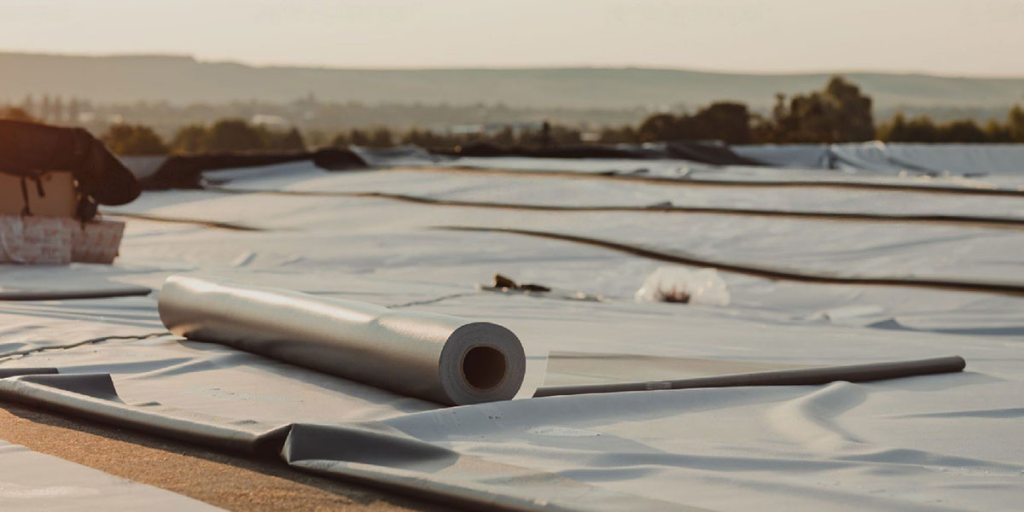Geomembranes are an essential component in various civil engineering applications, especially when it comes to environmental protection and construction projects. These synthetic materials are primarily used for lining and sealing purposes to prevent the passage of liquids or gases. Understanding geomembranes, their types, and their applications can help you make informed decisions for your next project.

What is a Geomembrane?
A geomembrane is a durable, impermeable barrier made from synthetic polymers, such as polyethylene or PVC. It is commonly used in construction projects where water containment, waste containment, or other environmental hazards need to be managed. This type of barrier is highly resistant to chemicals, UV rays, and other environmental factors, making it ideal for harsh conditions.
The primary function of a geomembrane is to provide a barrier that prevents fluid migration. Whether it’s for containing water in a reservoir or preventing leachate from landfills from contaminating the surrounding soil and groundwater, geomembranes are highly effective in these roles.
Types of Geomembranes
Geomembranes come in various forms, with different thicknesses, materials, and designs to suit different applications. The most common types include HDPE geomembranes, PVC geomembranes, and LDPE geomembranes. The selection of a geomembrane depends on the specific needs of a project, including factors like the type of environment, load-bearing requirements, and cost-effectiveness.
Geomembrana HDPE 1 mm
One of the most widely used geomembranes is the geomembrana HDPE 1 mm (High-Density Polyethylene). This material is known for its superior strength, resistance to environmental stress, and low permeability. Geomembrana HDPE 1 mm is used for a wide variety of applications, such as landfill liners, mining operations, and water containment systems. It is particularly valued for its durability and ability to withstand aggressive environmental factors like extreme temperatures and UV radiation.
HDPE geomembranes are available in different thicknesses, but the 1 mm thickness strikes a balance between flexibility and strength. It’s thick enough to provide reliable resistance to punctures and tears, but still flexible enough to adapt to various surfaces during installation. The geomembrana HDPE 1 mm has a high tensile strength and elongation properties, making it ideal for applications that require both flexibility and strength.
30 Mil Geomembrane Liner
Another popular type is the 30 mil geomembrane liner. “Mil” refers to the thickness of the geomembrane, with one mil equaling one-thousandth of an inch. The 30 mil geomembrane liner is a robust option for many containment and lining applications, offering excellent resistance to various environmental stressors.
A 30 mil geomembrane liner is often used in landfills, ponds, and water storage facilities. Its ability to resist punctures, tears, and UV degradation ensures long-lasting protection in environments exposed to various natural forces. This geomembrane is commonly used in applications where the strength of a liner is crucial but a thicker material like 60 mil might be overkill.
The 30 mil geomembrane liner is especially favored in applications that do not require excessive thickness but still need reliable containment. It’s a versatile option that is both cost-effective and practical for a variety of projects, from municipal landfills to mining sites and agricultural uses.
Geomembrane Liner
A geomembrane liner is a broad term that refers to any type of synthetic membrane used to contain liquids or gases. These liners are critical in many industries, from agriculture to environmental management. Whether it’s a geomembrana HDPE 1 mm, a 30 mil geomembrane liner, or any other variant, the core function of these liners remains the same: to act as an impermeable barrier that protects the environment.
The geomembrane liner is designed to create a barrier that prevents contaminants from escaping into surrounding soil or water. This makes them essential in industries like waste management, mining, and agriculture, where leakage could result in environmental damage.
Applications of Geomembranes
Geomembranes are used in a wide range of applications where environmental protection is a priority. Some of the most common applications include:
Landfills
One of the most critical applications of geomembranes is in landfills. Geomembrane liners are used to line the bottom and sides of landfills, preventing hazardous materials like leachate from contaminating the surrounding soil and groundwater. The liners provide a barrier to liquids and gases, ensuring that the environment remains protected from harmful substances.
Water Containment
In many industries, geomembranes are used to contain water. Whether for agricultural purposes or water storage in reservoirs, these liners help ensure that water stays where it is needed. The geomembrana HDPE 1 mm is a popular choice for such applications because of its strength and resistance to environmental wear.
Mining Operations
In the mining industry, geomembranes are used for tailings containment and to line ponds and ponds where water is stored or treated. 30 mil geomembrane liners are often employed due to their durability and cost-effectiveness in such settings. These geomembranes ensure that toxic substances and chemicals are contained, reducing the risk of environmental contamination.
Agriculture
Geomembranes are also used in agricultural projects to manage water resources efficiently. By lining irrigation canals, water storage ponds, and even agricultural waste containment facilities, geomembranes help prevent water loss and keep contaminants out of the environment.
Advantages of Geomembranes
Geomembranes offer several advantages over traditional methods of containment. They are highly durable, resistant to punctures, and provide excellent chemical resistance. Additionally, geomembranes are flexible, easy to install, and cost-effective in the long run. Their ability to resist UV degradation and extreme temperatures makes them ideal for outdoor use in challenging environments.
Conclusion
In conclusion, geomembranes like the geomembrana HDPE 1 mm, 30 mil geomembrane liner, and geomembrane liner are vital components in modern civil engineering and environmental protection projects. They provide effective containment solutions, helping to prevent the migration of liquids and gases and ensuring the protection of soil, water, and other natural resources. By understanding the various types and applications of geomembranes, you can make better decisions when planning your next project.
